
Blue sea dragon nudibranch mollusk borosilicate glass sculpture (Glaucus atlanticus) https//www
The Blue Dragon: The world's rarest mollusks. The strange blue creature in the photo above may look like a monster from a Japanese RPG, but is actually a real animal—the Glaucus atlanticus sea slug, to be exact. Commonly known as the blue dragon or blue sea slug, this beautiful little mollusk can be found off the coast of South Africa.
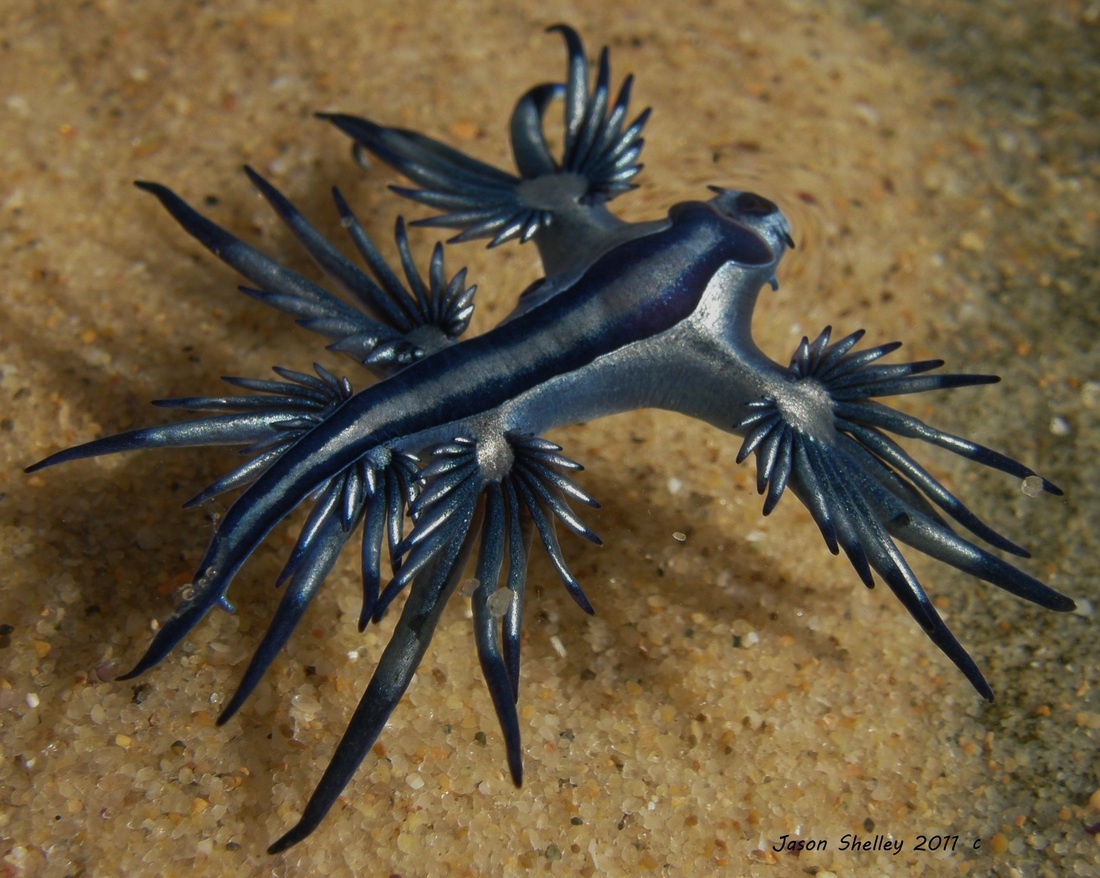
Blue Dragon Mollusk Questinmark
Glaucus atlanticus (Blue Dragon) is a species of snails in the family Glaucidae. They are native to Indian Ocean and New Zealand Exclusive Economic Zone. They are carnivores. They have sexual reproduction. EOL has data for 14 attributes, including: Body symmetry. bilaterally symmetric. cellularity. multicellular.
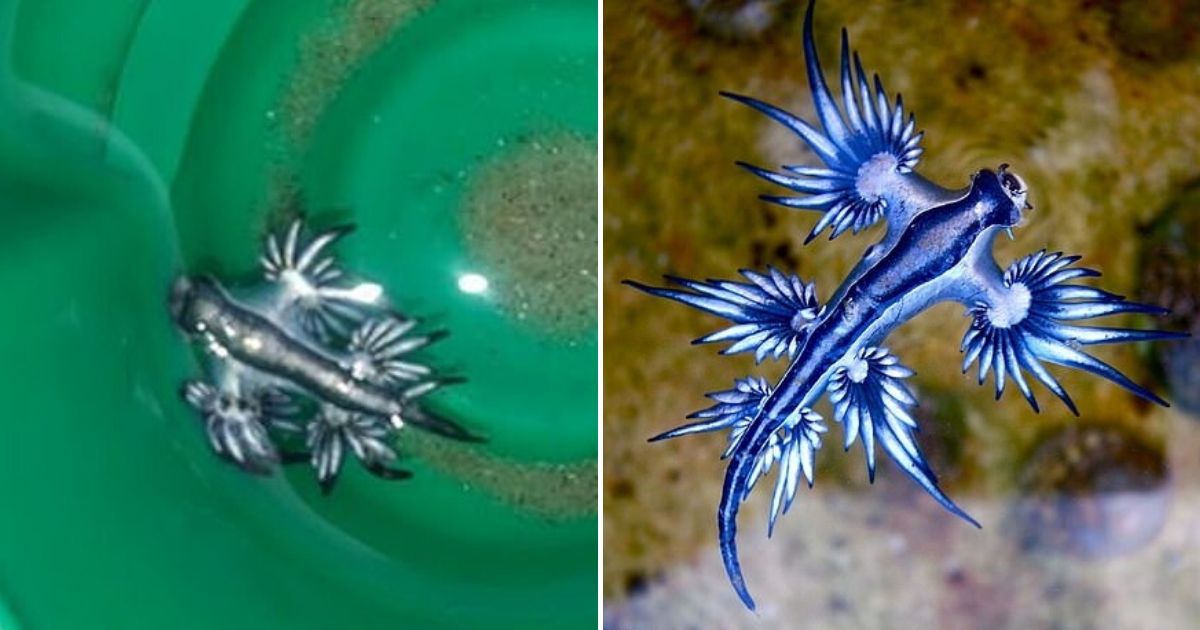
Dangerous Blue Dragon Slugs Have Invaded The Seawaters Of Texas Small Joys
The mythical Blue Glaucus, or Glaucus atlanticus as known by its scientific name, is a small-sized blue sea slug species. It has distinctive dazzling blue hues that have garnered it plenty of attention in recent years. These colors have also inspired a series of nicknames, such as blue dragon, sea swallow, and blue angel.

Blue Dragon Mollusk
Meet the Glaucus atlanticus, better known as the blue dragon sea slug or blue dragon mollusk. Photo: Imtorn (Own work) [ CC BY-SA 3.0 ], via Wikimedia Commons This mythical-looking animal is very much real, yet hard to find. Photo: Taro Taylor from Sydney, Australia [ CC BY 2.0 ], via Wikimedia Commons

The Blue Dragon (Glaucus atlanticus), one of the world’s rarest and most beautiful mollusks
The blue dragon (Glaucus atlanticus) is a type of mollusk, or sea slug, known as a nudibranch. It can be found on the surface of the Atlantic, Pacific, and Indian oceans in temperate and tropical waters throughout the world.. The blue dragon floats on its back (an air bubble in its stomach helping it maintain buoyancy), its brightly colored.
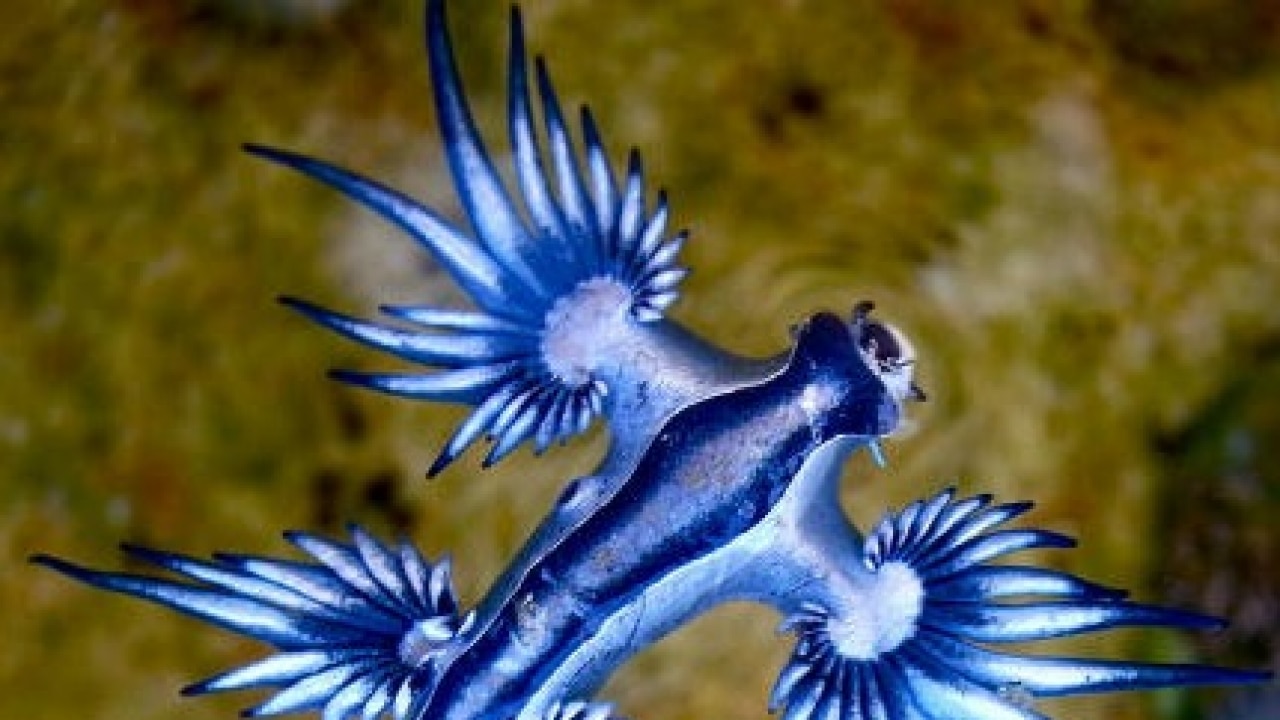
Watch Rare and spectacular Blue Dragon washes ashore in Australia
The Blue Glaucus, or sea swallow, blue dragon, blue angel, blue sea slug, and blue ocean slug, (Glaucus Atlanticus), is a species of small-sized blue sea slug, a pelagic aeolid nudibranch, a marine gastropoda mollusk in the family Glaucidae. This is the only species in the genus Glaucus, but is closely related to Glaucilla marginata, which is sometimes included in Glaucus. This sea slugs feeds.
/blue-dragon--glaucus-atlanticus--blue-sea-slug-986491702-f0cb140dd639453e8a2d8c56637dce73.jpg)
Blue Dragon Mollusk
Updated November 9, 2023. Glaucus atlanticus, or the blue dragon, is one of the most fascinating looking creatures in the ocean. It also happens to be one of the most deadly. Recently, miniature blue dragons washed up on Australia's shores. The dragons drew in beachgoers, as they always do, with their strange, singular beauty.

The Blue Dragon (Glaucus atlanticus) one of the rarest and most beautiful molluscs [VIDEO
The blue glaucus, which is also called the blue dragon, sea swallow, or blue angel, is a brightly colored nudibranch, commonly known as sea slugs. Found throughout the Atlantic, Pacific, and Indian Oceans in tropical and subtropical waters, the blue glaucus grows up to 1.2 inches (3 cm) long. These tiny sea slugs spend most of their lives.
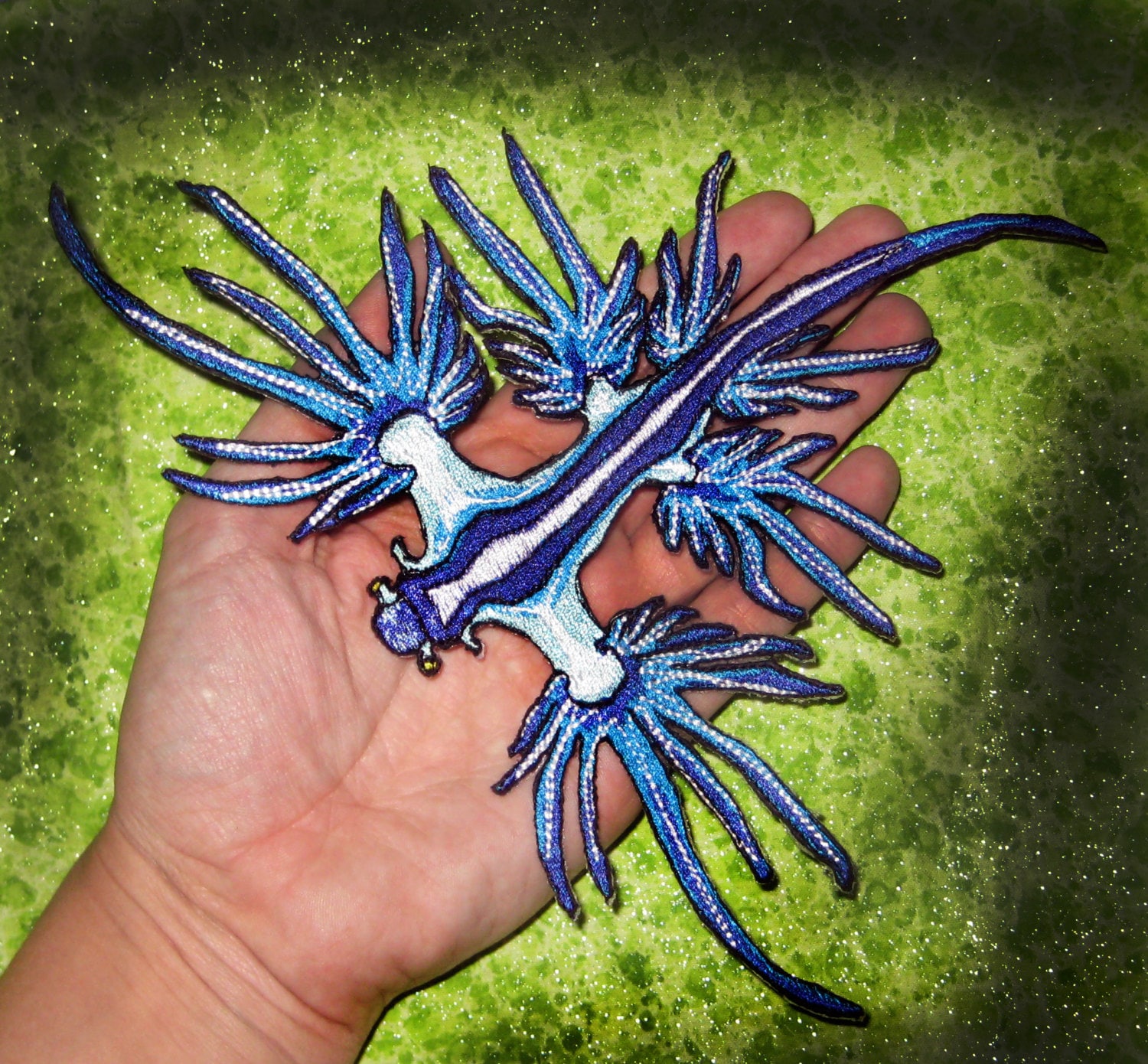
Blue Dragon Sea Slug Blue Dragon Mollusk Blue dragon, Glaucus atlanticus, Sea The
The blue dragon, the scientific name Glaucus atlanticus, belongs to the gastropod mollusks of the cephalopod family. You can call it a blue ocean snail. It r.

Dancing Glaucus Atlanticus (Blue Dragon) Nudibranch AUSTRALIA P1080004.MP4 YouTube
Blue Dragon at maturity can reach up to 3 centimeters long. It has dark blue stripes that can be seen on its head and a fat tapering body with six appendages that becomes finger-like cerata. Blue Dragon radula has serrated teeth. This species feeds other pelagic creatures like Portuguese man o'war and other poisonous siphonophores.

The Blue Dragon (Glaucus atlanticus), one of the world’s rarest and most beautiful mollusks. pics
April 12, 2012 The Glaucus atlanticus sea slug, or blue dragon, feeds on toxins from much larger species. Taro Taylor / Getty Images This tiny creature has gotten a fair bit of attention lately.

animals Glaucus atlanticus, Weird sea creatures, Blue sea slug
Glaucus atlanticus (common names include the blue sea dragon, sea swallow, blue angel, blue glaucus, dragon slug, blue dragon, blue sea slug, and blue ocean slug) is a species of small, blue sea slug, a pelagic (open-ocean) aeolid nudibranch, a shell-less gastropod mollusk in the family Glaucidae.

The Blue Dragon (Glaucus atlanticus) one of the rarest and most beautiful molluscs [VIDEO
Glaucus atlanticus (common names include the blue glaucusdragon slug) is a species of small, blue (open-ocean) aeolid nudibranch, a shell-less Glaucidae [2] These sea slugs are ; they float upside down by using the of the water to stay up, where they are carried along by the winds and ocean currents.

Blue Dragon Mollusk Free Stock Photo by Nicholas Spaggiari on
Dragon slug Sea swallow The flat, tapered body of the blue glaucus contains six distinct appendages. Each one branches out into eighty four (84) finger-like structures called 'cerata'. Its radular teeth resemble the serrated edge of a knife. At first glance, it may look like an angelic creature floating at the surface.
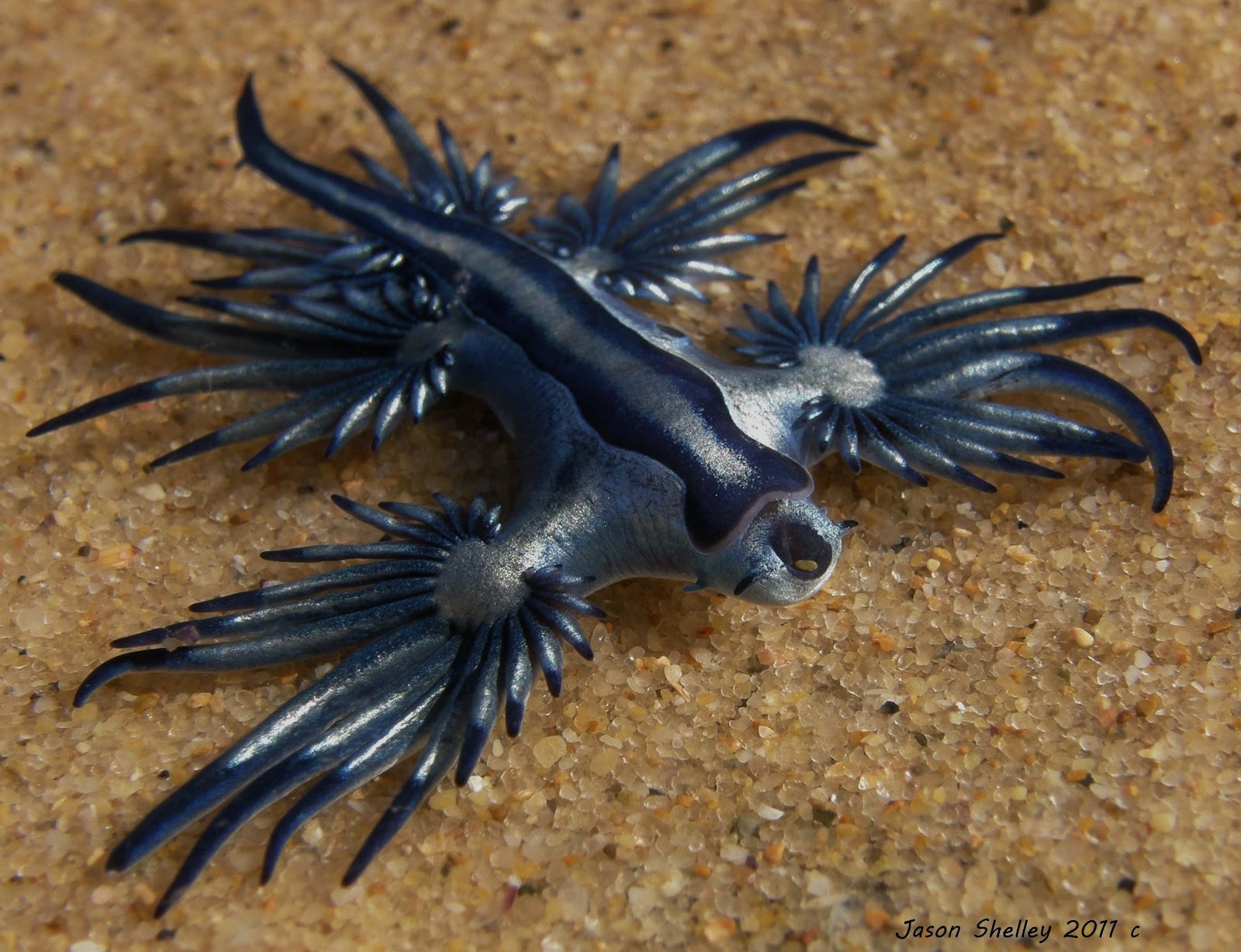
Glaucus atlanticus, The Blue Dragon New Stylish Wallpaper
Blue Dragon Sea Slug Animal Facts | Glaucus atlanticus - A-Z Animals Blue Dragon Sea Slug Glaucus atlanticus Last updated: April 1, 2023 Verified by: AZ Animals Staff © iStock.com/S.Rohrlach Animals Home All Animals Blue Dragon Sea Slug They steal the venomous nematocysts from their prey and concentrate the venom in their own bodies!

(Closer up) Blue Dragon (mollusk) Simply beauty Pinterest Blue dragon, Underwater
The blue dragon ( Glaucus atlanticus) is a type of mollusk known as a nudibranch. Despite its impressive appearance, it rarely grows larger than three centimeters long. It can be found.